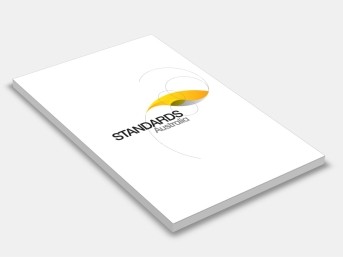AS 3999:2015 Bulk thermal insulation - Installation
Standards Australia
Supersedes: AS 3999-1992 Bulk thermal insulation - Installation
Supersedes: AS 3999-1992 AMDT 1 Bulk thermal insulation - Installation
Draft Designation: DR AS 3999This Standard specifies the procedures for installing bulk thermal insulation in dwellings. The requirements were compiled from a wide range of procedures used in Australia and considered as consistent with good building practice in the installation of bulk thermal insulation.
The Committee has recognized the risk of certain electrical cables and equipment overheating when operating for extended periods when partially or completely surrounded by thermal insulation. To minimize this possibility a pre-installation inspection has been
called for in order to identify whether this potential problem may occur where the thermal insulation is to be placed. The procedure to be adopted as a result of the inspection is set out in this Standard.
The Standard does not attempt to specify requirements for every method of installation of insulation. Rather, it provides general requirements, together with a number of common methods.
The various sub-structures that may be insulated with bulk insulation are dealt with in Section 5 with cross-references where necessary.
It is recommended that users of this Standard read the document as a whole rather than only referring to information on the specific building sub-structure to be insulated.
Installation of bulk thermal insulation, using the requirements and methods given in this Standard, will lead to reduction of heat gain in summer and of heat loss in winter. Bulk insulation and membranes work together to control heat, air and moisture, therefore the properties of membranes should always be considered. This Standard may also be read in conjunction with AS/NZS 4200.2, Pliable building membranes and underlays, Part 2: Installation requirements.
Originated as AS 3999-1992.
The Standard sets out requirements on installing insulation in both new dwellings during construction and the retrofitting of insulation in existing buildings.
This Standard is intended for residential-type construction; however, the methods may be appropriate to other forms of construction.
This Standard includes requirements for electrical safety and guidance on Work Health and Safety.
This Standard is not intended to apply to the insulation of building services and equipment or materials with structural and/or external cladding or internal lining purposes.
This Standard does not deal with insulation that is foamed in situ nor the installation of pliable building membranes except when forming part of a bulk insulation product.
Insulation installed for the sole purpose of reverberation control is excluded from this Standard.
For the purposes of this Standard, bulk insulation also includes products which create multiple airspaces with a total installed product thickness greater than 20 mm.
Contents:
Section 1 Scope And General
Section 2 Pre-Installation Inspection And Procedures
Section 3 General Requirements For Insulation Installation
Section 4 Safety Requirements For Insulation Installation
Section 5 Thermal Envelope Detailed Installation Methods
Section 6 Installation Statement
Appendix A: Recessed Luminaires
Appendix B: ‘Text Deleted’
Appendix C: Mechanical Strength Test For ‘Fixed In Position’
Appendix D: Installer’s Statement
Appendix E: Ceiling Perimeter Insulation
Appendix F: Edge Insulation Solutions
Appendix G: Condensation
Appendix H: Insulating Trussed Ceilings
Appendix I: Insulating Under Concrete Slab Roofs And Floors
Appendix J: Insulation Retro-Fit And Remediation
Appendix K: Electrically Conductive Bulk Insulation
Thermal Insulation.
BD-058
Aluminium Foil Insulation Association; Australasian Fire and Emergency Service Authorities Council; Australian Building Codes Board; Australian Cellulose Insulation Manufacturers Association; Australian Professional Thermography Association; Community Energy Network; Consumers Federation of Australia; Council of Textile and Fashion Industries of Australia; CSIRO Material Science and Engineering; Curtin University of Technology; Electrical Regulatory Authorities Council; Housing Industry Association; Insulation Australasia; Insulation Council of Australia and New Zealand; Master Builders Australia; Plastics and Chemicals Industries Association; Pliable Membranes Association of Australia; Recessed Luminaire Enclosure Association of Australia; The Insulation Contractors Association of Australia, NSW; Thermal Insulation Contractors Association of Australia.
